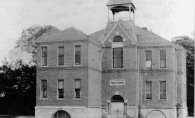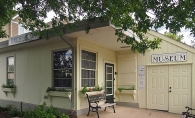Few people are aware that within the walls of the John Nasseff Heart Center, part of United Hospital, there is a room of human hearts that dates back to 1945. But the Jesse E. Edwards Registry of Cardiovascular Disease is not just a museum, says Dr. Shannon Mackey-Bojack, the registry’s medical director.
“We don’t just collect things. We actually are a referral laboratory, so that means we are sent heart specimens from around the country to aid pathologists in diagnosing diseases and determining the cause of death,” Mackey-Bojack says.
Dr. Jesse Edwards started the registry in 1950 after working at Mayo and then the University of Minnesota, where a large collection of hearts was not being used. At that time, autopsy consent wasn’t needed, “so almost everybody who died in a hospital was autopsied,” cardio pathologist Dr. Emily Duncanson says. “So that’s why they had so many hearts just sitting there waiting,” which was the start of the registry’s collection.
“When Dr. Edwards started the registry, nobody had really classified heart disease,” Mackey-Bojack says. “So everyone was calling things by different names, and it was very confusing to everyone.” Edwards started classifying all the hearts at the university based on different conditions and variants, using a three-digit code similar to a Dewey Decimal system, making him one of the pioneers in classifying congenital heart disease.
The registry, which started in the old Miller Hospital, moved to its current location when Miller combined with St. Luke’s and formed United in the 1980s. Edwards was the director of the registry from 1960 to 1987, then the position was held by Dr. Jack Titus until 2004. Titus had a strong interest in sudden death cases, which allowed the registry to expand into forensics, and got Mackey-Bojack and Duncanson involved, as both have studied forensic pathology.
Hearts are now sent to the registry from across the country, something Edwards strived to achieve. “He really wanted to have a free-standing registry that could collaborate with many different institutions to study all forms of heart disease,” Mackey-Bojack says. “Being independent, and a part of Allina Health, we’re able to collaborate with say, Harvard and Mayo, and [other places such as] Stanford on different projects.”
The hearts are sent to the registry for a variety of reasons. “Half are sent to us from medical examiners,” Mackey-Bojack says. When someone dies for unknown reasons, the medical examiner will contact the family of the deceased and let them know the heart is needed to determine the cause of death. With the family’s consent, the registry then does an autopsy on the heart to determine whether or not heart disease was the cause. Similarly, people who die from heart disease within hospitals, after the family signs consent, have their hearts sent to the registry for classification.
The benefits of classification and the registry are many, says Mackey-Bojack. Before going into surgery, a surgeon has the opportunity to look at a heart with the same condition as the patient, allowing the doctor to see what they must do once the chest is open—something they cannot do with a 2-D model. Another is to help in treatment. “Device companies will come in here and look at different conditions to try to develop techniques for fixing and using devices without requiring open-heart surgery,” Mackey-Bojack says.
Cardiac disease is the most common cause of natural death, and the registry is helping the medical community better understand why—and how to prevent it. The registry is even able to connect family members of those who died from a genetic cardiac condition to doctors and services that can help determine if the rest of the family is at risk.
“It’s not just a room full of hearts,” Duncanson says. “It’s a network, and it’s active, and we’re still working on innovations and collaborations. There’s still more to know.”









